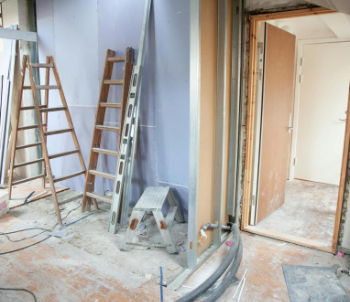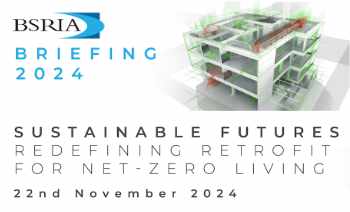The design of extra care housing for older people and its impact on wellbeing: The East Sussex perspective
Author: East Sussex County Council, Adult Social Care: Housing Commissioning Team
[edit] Background and Context
A central consideration in the design of Extra Care housing is to create an environment that both reduces the need for, and make it as easy as possible to deliver, both formal and informal care and support as the residents age. The presence of an on-site care team that can be flexible and responsive to changing needs, as well as communal facilities, are core elements to its success. As part of a strategic programme of the joint commissioning of Extra Care in East Sussex, five schemes have been completed since 2004. This paper focuses on the findings from evaluations of these schemes where Adult Social Care (ASC) have a housing and care commissioning role. Key aspects of the design of the physical environment in relation to the maintenance of wellbeing are considered. Data on subjective and objective wellbeing (1) gathered from individual interviews includes safety and security, nutrition, social contact, quality of life and independence. Lessons learnt from this research have provided us with a rich source of data to inform and influence the design of new schemes as we move forward.
[edit] Design of Extra Care
The design of Extra Care schemes, both in individual flats and the communal areas, aims to accommodate the changing needs of people with a combination of physical, mobility, sensory and cognitive impairments including dementia that become more prevalent in older people. The design approach must therefore consider not only layout and space requirements, but also acoustics, tonal contrast, lighting and the selection and location of appropriate fittings and furniture. The design intention is to maximise the ability to actively engage in all aspects of daily life, and to facilitate independence for as long as possible. The designs are informed by the application and interpretation of good practice guidance and standards including BS8300,(2) the Wheelchair Housing Design Guide (3), HAPPI recommendations (4), EVOLVE (5), and Lifetime Homes (6) and Dementia Services Development Centre audit tools.(7)
The schemes provide between 40 and 60 spacious self-contained one bed (55 - 57m²) and two bed (69 – 76m²) flats. Flat layouts incorporate a large central hallway leading to a bedroom with ensuite bathroom and an open plan living/dining kitchen area, accessible for wheelchair users. The kitchens are wheelchair accessible, fitted with an eye level oven and separate hob. The bathrooms have wet floor shower rooms with WCs. The number of rails are kept to a minimum to preserve a homely appearance and so that precise locations can be identified based on individual needs. En suite WCs are positioned within view of the head end of the bed to encourage intuitive use for people with dementia.
Communal areas include: lounge, activity rooms, restaurants, and accessible gardens. Some schemes have accessible allotment areas, green houses and potting sheds. The location of these communal facilities around the main entrance is intentionally outward facing to encourage use by families, friends and informal carers and the local community. To ensure privacy for residents, a secure progressive privacy system accessed by programmable fobs or swipe cards is used.
[edit] Extra Care Housing in East Sussex
The development of Extra Care housing in East Sussex is a key area of service provision. East Sussex County Council (ESCC) Adult Social Care (ASC) has had a commissioning role in developing five schemes, with two currently in development.
Table 1: Extra Care Schemes in East Sussex: development schedule
[edit] Methodology
Since 2012 two intensive evaluation processes have been conducted to analyse the benefits in respect to care and support needs and delivery, quality of life, and impact of design on independence:
- The first, Extra Care Housing in East Sussex Evaluation Report (by an independent consultant) involved a comparative analysis of where residents would be living if they were not in Extra Care. Conducted between November 2012 and January 2013 it provides a snapshot view of the five schemes.
- The second, KBIT (Key Background Information Template) Evaluation is a study of the most recently completed scheme, involving one-to-one interviews with a group of residents repeated at 6 month intervals over a two year period.
Research Governance approval was sought and approved in accordance with ESCC requirements.
[edit] Extra Care Housing in East Sussex Evaluation Report 2013 (comparative study of five schemes)
The aim of this comparative study was to consider whether:
- Extra Care is a preventative service model, which enables people to remain in the community and not need to enter residential or nursing care.
- Extra Care is a more cost effective model compared to residential/ nursing care or care provided in a person’s own home.
An independent consultant carried out a desktop exercise using ASC social care assessments, reviews and support plans of each resident, authenticated by scheme visits and staff discussions and supplemented by housing needs assessments and support plans. This information was verified by a sample moderation exercise by ASC Practice Managers. Four separate processes have therefore authenticated the available evidence.
[edit] Key Background Information Template (KBIT) Evaluation (2 year longitudinal study)
[edit] Cohort of Residents informing the evaluation
Cranbrook in Eastbourne, the most recently completed scheme, opened in January 2012 is mixed tenure (52 social rented, and 10 shared equity flats). A group of 25 new residents were identified to form the cohort of interviewees. Of those, 20 residents (Table 2), 11 male and 9 female, continued through the study to the 12-month stage. 17 are older people (over 65), 2 working age adults with a Learning Disability (LD) and one with Mental Health (MH) needs. 7 have a live in informal carer. (8) 18 were social renting tenants and 2 were shared equity.
| Breakdown of the 20 Interviews | Age of main care receiver | No. of main care receivers and their age group | Total Numbers |
| Individuals |
50 – 64 65 –74 75 – 84 85+ |
2 (1xMH) 2 (1xLD) 5 4 |
13 (65%) |
| Couples |
50 – 64 65 – 74 75 – 84 85+ |
1 (1xLD) 2 4 0 |
7 (35%) |
| TOTAL |
50 – 64 65 – 74 75 – 84 85+ TOTAL = |
3 (1xLD; 1xMH) 4 (1xLD) 9 4 20 |
20 (100%) |
Table 2: Age and client category of 20 Interviewees at 12-month stage
[edit] Semi-Structured Interviews using KBIT
Each resident completed an initial KBIT together with the Scheme Manager, as part of the allocations and move-in support process. Information gathered was supplemented by data from individual ASC client records. Data gathered from interviews at 6 and 12 months using a KBIT questionnaire (9) is discussed in this paper. The interview covered key areas including: levels and types of care; physical, sensory, and cognitive ability and needs; meals and nutrition; ability to access other services; incidence of falls, A& E and hospital admissions; safety and security, quality of life and the suitability of the design of the living environment.
[edit] Key Findings: Wellbeing
The findings from both studies support the premise that Extra Care is a preventative environment supporting clients to regain or retain independence for longer than they would if they were living elsewhere.
[edit] Extra Care as an alternative to Residential Care
Hypothetical alternatives of where a person would be living if they were not in the Cranbrook Extra Care scheme, revealed 77% of residents would otherwise need some form of residential care or Elderly Mentally Infirm (EMI) or nursing care alternative, with the remaining 23% requiring domiciliary care at home or in sheltered housing(10). In all schemes, the combination of an accessible environment, a meal service, the presence of a spouse, relatives, or neighbour, the reassurance of care on-site, and support by the scheme manager if required, lessened anxiety. These were all important contributors in helping people to maintain or regain their independence.(11)
[edit] Nutrition
The schemes incorporate on-site restaurants and the purchase of a daily two-course lunch is available to all residents. The Registered Provider contract requirements stipulate the provision of a nutritionally balanced diet. 95% of the KBIT cohort made use of the restaurant. (12) It has been suggested that the availability of freshly prepared food has played a significant role in improving general health for residents who were otherwise catering for themselves. The location of the restaurant adjacent to the lounge and activity rooms also facilitates social engagement: “The provision of meals is vital as the restaurant gives a scheme its heart, and in turn this leads to socialisation and many ensuing benefits” (13)
[edit] Social Contact
The reduction of social isolation continued to was a recurring theme. The presence of the on-site care team; developing friendships with other residents; receiving help and support, particularly respite and reassurance for live-in informal carers; continues to contribute positively towards the wellbeing of residents. 75% of the interviewees engage in on-site activities; the most popular being seasonal events (i.e. Christmas, Easter etc), and weekly music activities. 85% of interviewees reported that staff and other residents are respectful of their needs.
[edit] Coping with Practicalities
Individual flats have washer/drier space but there is also a communal laundry. Where general wellbeing was enhanced, there were examples of how this had a positive impact. Feedback indicates that if practical, previously onerous tasks were done for them, people could attend to personal care made easier by a more accessible environment with the potential for re-ablement. This also provided informal live-in carers with respite. (14)
[edit] Informal Carers impact on wellbeing
A key aspect of extra care accommodation is the scope to support couples to continue to live together. Extra Care offers respite for the carer and the reassurance of security for both with the knowledge that help is at hand. (15) Informal live-in carers are being re-abled by the enabling environment in the scheme and the on-site care provision to care for their partners; ensuring continuity of independent living. Informal carers tasks vary from the personal to domestic.
[edit] Comparing previous accommodation to Extra Care
Residents acknowledged the benefits of Extra Care Schemes compared to their previous accommodation, where: “..they were rendered disabled, unable to manage either external or internal steps or the small dimensions of the rooms.. . they felt their home environment trapped them.. This had had a disproportionately negative impact on wellbeing, confidence, self-perception and dependency on others. (16) Other issues with previous accommodation included: being unable to access the upstairs, having to sleep and bathe in the dining room, and bathrooms that were inaccessible for wheelchair users. (17)
[edit] Wellbeing: the role of design in meeting needs
Table 3: The role of design in meeting needs
The residents’ views on the design of their flats were overwhelmingly positive (Table 3). All respondents stated that the accessibility of the scheme, the layout of their flats, and the number of bedrooms they had, met their individual needs. “Many people found they were more able in this environment and did not require so much equipment or assistance because the environment is accessible”. (18)
[edit] The Communal Areas and Facilities – what works well?
The communal spaces that the interviewees found most successful in respect of environmental design were the Restaurant, Lounge and circulation areas. They found the access and location of these facilities convenient and well thought out. (19) The outside areas were used less frequently and by fewer residents. (20)
[edit] Compatibility with Specialist Equipment
The design of the individual flats is intended to be as accessible as possible without creating an institutional feel. It is recognised that there may be specific individual needs that will need to be met by provision of specialist equipment. The main challenge is to design the built environment to be as adaptable as possible and compatible with specialist
equipment. Over the past 6 months equipment provided to the cohort of 20 interviewees included electric profiling beds, shower seats, a wheelchair and a ceiling track hoist. (21) The research found that compared to previous accommodation:” Even with equipment or major adaptations, on the whole people were nowhere near as mobile and fit as they were when they moved into an accessible environment and regained their skills of independent living.” (22) This in turn has had a positive impact on the amount of care and support required, the willingness of informal carers to continue to care, a reduction in social isolation and improvements in health and wellbeing.
[edit] Areas for Improvement
Achieving a balance between creating an inclusive design that can be accessible, adaptable and compatible with changing needs, where the end users are unknown, is challenging in certain key aspects. There are areas for improvement that we are now implementing in schemes currently under development. These include:
- Shower seats: Wall mounted fold down shower seats were provided in all flats. However since it is not possible to predict the height of the user in advance, this has presented some issues. As one resident pointed out: “The shower seat is too flimsy and too low”. In discussion with the Registered Provider the current policy is not to provide in advance but keep a small stock on site that are more robust to be fitted as and when the need arises.
- Kitchens: Unsurprisingly kitchens continue to be the most challenging aspect of the design in terms of adaptability. Two respondents commented that:” “the kitchen cupboards and worktops are not suitable for wheelchair users”. Each scheme aims to provide for a minimum of two flats with wheelchair accessible kitchens (23). However particularly with an older age group where people may become wheelchair users as their mobility deteriorates, it continues to be a challenge to match people to specific flats. Where possible, the design of the kitchens incorporates as much accessible, pull out storage as possible and wall units that are lower than standard whilst still retaining sufficient space between the worktop and counter.
- Carpets: Many residents find the carpets too light. This will be addressed in the new schemes, whilst continuing to stipulate that the tone of the flooring should be continuous between rooms and between carpet and vinyl areas in line with design guidelines for dementia.(24)
[edit] Impact of Design on Wellbeing: overall satisfaction
Interviewees were asked to rate the scheme in terms of their general wellbeing according to aspects including quality of life, independence and control, and opportunities for social engagement. The response was overwhelming positive. (Table 4) (25) 
Table 4: Resident Satisfaction at Cranbrook
- Feeling safe and secure. Communal areas accessible by the wider community are separated from residents’ homes by using programmable fobs. This system of progressive privacy (accessing and protecting one’s home when other areas of the scheme are accessible to the public. The system also provides reassurance for the informal carers of people with dementia, as the need for a fob acts as a deterrent.
- Supporting Independence. Provision of accessible flats, communal areas, scheme facilities, and in particular the wet-rooms, enables residents to be more independent.
- Improved quality of life. The design and layout of the schemes are both accessible and attractive. An interior designer is commissioned to create a contemporary environment and the brief is to avoid an institutional or hospital feel. Glazed panels t provide intuitive orientation rather than reliance on signage divide communal areas. Interviewees who reported using the on-site restaurant on a daily basis and the activities rooms, felt that their overall quality of life had improved since moving in. (26)
Both studies indicated that the design and layout of individual flats and the whole scheme impacted positively in maximising independence. 
Dashboard of key findings
[edit] Conclusion and Recommendations
The research has highlighted a wealth of benefits for residents of Extra Care in East Sussex. A key finding is the improvement in general wellbeing as a result of reduced levels of social isolation; and the ability to meet the fluctuating care and support needs of residents appropriately within this enabling environment. Given the right environment people with a range of physical, sensory and cognitive impairments feel more confident and able to be more active and less reliant on care. Both evaluations provide evidence that there is a strong interface between the design of extra care housing and its positive impact on delivery of care and resident satisfaction levels. Overall satisfaction levels of interviewees are very high, particularly around quality of life, health and wellbeing. Findings from the comparative study suggest that 77% of the residents at the Cranbrook Scheme at would otherwise be in residential or nursing care, with 23% hypothetically requiring domiciliary care in their own home or sheltered housing (27). Provision of good quality accessible communal facilities has been shown to have benefits in terms of maintaining nutrition and reducing social isolation. The evaluations have highlighted areas for further research into the impact of design. Namely, to conduct a cost benefit analysis of how to make kitchens more adaptable to a range of needs, and to gather more specific evidence on exactly where design can impact on levels of care required.
This paper was entered into a competition launched by --BRE Group and UBM called to investigate the link between buildings and the wellbeing of those who occupy them.
[edit] References
- 1 DOH (2014) Wellbeing and why it matters to health (p6) https://www.gov.uk/government/publications/wellbeing-and-health-policy(accessed 120214)
- 2 BS8300: 2009+A1 2010:Design of Buildings and their approaches to meet the needs of disabled people – Code of Practice. BSI Standards Publication
- 3 Thorpe, S (2nd Ed.) (2010) Wheelchair Housing Design Guide, Habinteg
- 4 HAPPI Housing our Ageing Population Panel for Innovation Report 2009 http://www.homesandcommunities.co.uk/housing-ageing-population-panel-innovation(accessed 110214)
- 5 EVOLVE Evaluation of Older Peoples Living Environments 2010 http://www.housinglin.org.uk/Topics/type/resource/?cid=7997& (accessed 110214)
- 6 Lifetime Homes Standards.
- 7 Dementia Services Development Centre http://dementia.stir.ac.uk/ (accessed 110214)
- 8 NB: Where couples have been interviewed, answers are based on the principal interviewee/main care receiver
- 9 KBIT Evaluation Questionnaire
- 10 Robertson, G (2013) Extra Care Housing in East Sussex Evaluation Report (p8)
- 11 Robertson, G (2013) Extra Care Housing in East Sussex Evaluation Report, Appendix 6
- 12 KBIT Evaluation (2013) (p9)
- 13 Robertson, G (2013) Extra Care Housing in East Sussex Evaluation Report (p23)
- 14 KBIT Evaluation (2013) (p13)
- 15 Robertson, G (2013) Extra Care Housing in East Sussex Evaluation Report (p11)
- 16 Robertson, G (2013) Extra Care Housing in East Sussex Evaluation Report,(p16)
- 17 KBIT Evaluation (2013), (p27)
- 18 Robertson, G (2013) Extra Care Housing in East Sussex Evaluation Report, p16
- 19 KBIT Evaluation (2013), p27
- 20 KBIT Evaluation (2013)p27
- 21 KBIT Evaluation (2013) p27
- 22 Robertson, G (2013) Extra Care Housing in East Sussex Evaluation Report, p16
- 23 Thorpe, S (2nd Ed.) (2010) Wheelchair Housing Design Guide, Habinteg
- 24 Dementia Services Development Centre guidelines
- 25 KBIT Evaluation (2013)
- 26 KBIT Evaluation
- 27 Robertson, G (2013) Extra Care Housing in East Sussex Evaluation Report, p16
Featured articles and news
HBPT and BEAMS Jubilees. Book review.
Does the first Labour budget deliver for the built environment?
What does the UK Budget mean for electrical contractors?
Mixed response as business pays, are there silver linings?
A brownfield housing boost for Liverpool
A 56 million investment from Homes England now approved.
Fostering a future-ready workforce through collaboration
Collaborative Futures: Competence, Capability and Capacity, published and available for download.
Considerate Constructors Scheme acquires Building A Safer Future
Acquisition defines a new era for safety in construction.
AT Awards evening 2024; the winners and finalists
Recognising professionals with outstanding achievements.
Reactions to the Autumn Budget announcement
And key elements of the quoted budget to rebuild Britain.
Chancellor of the Exchequer delivers Budget
Repairing, fixing, rebuilding, protecting and strengthening.
Expectation management in building design
Interest, management, occupant satisfaction and the performance gap.
Connecting conservation research and practice with IHBC
State of the art heritage research & practice and guidance.
Innovative Silica Safety Toolkit
Receives funding boost in memory of construction visionary.
Gentle density and the current context of planning changes
How should designers deliver it now as it appears in NPPF.
Sustainable Futures. Redefining Retrofit for Net Zero Living
More speakers confirmed for BSRIA Briefing 2024.
Making the most of urban land: Brownfield Passports
Policy paper in brief with industry responses welcomed.
The boundaries and networks of the Magonsæte.



























